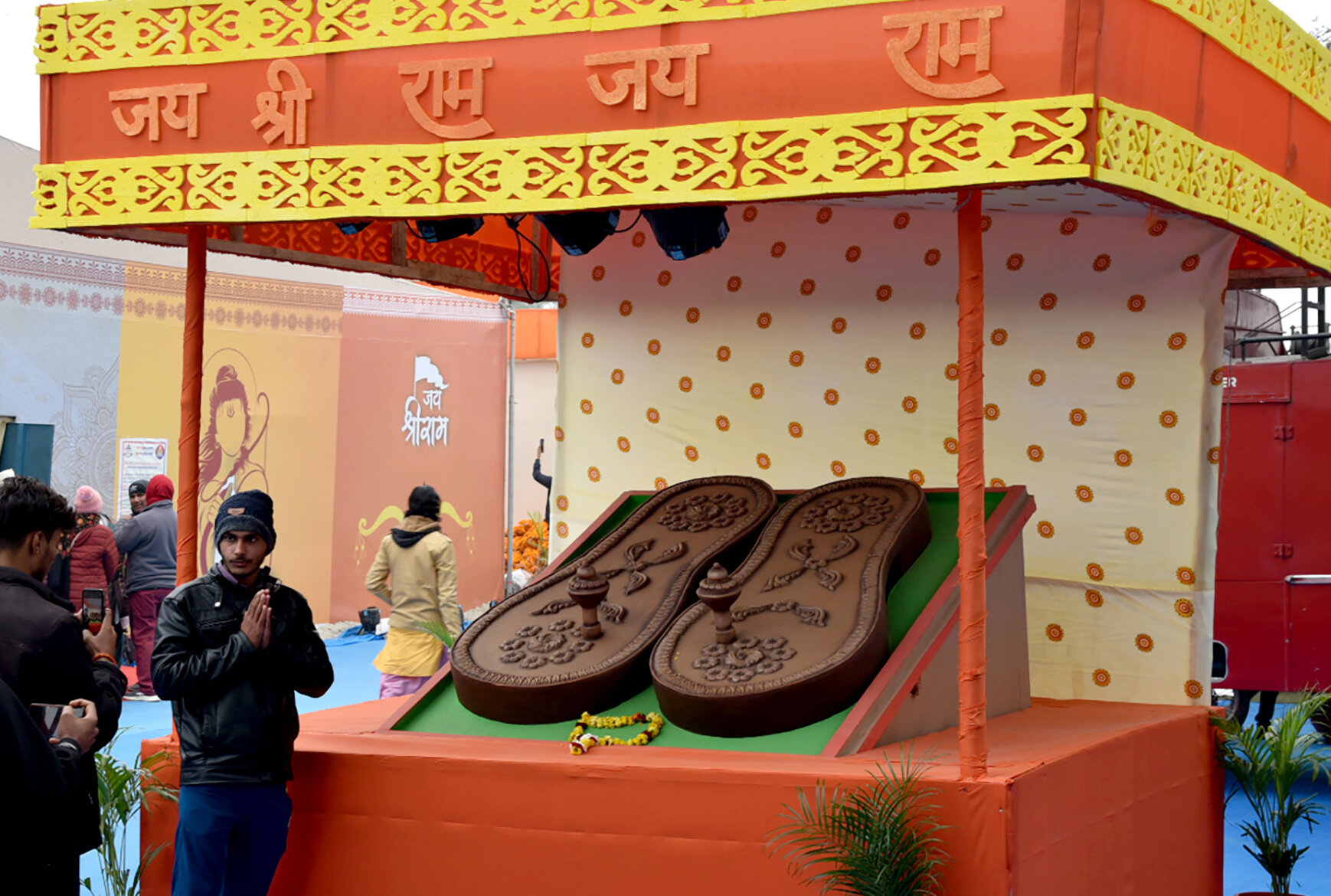NEW DELHI, January 21: From snow-capped peaks in Kashmir to sun-drenched beaches in Kanyakumari, the echoes of Ram’s name have woven a tapestry of devotion across India. Now, this devotion is taking a tangible form in the shape of the historic Ram Mandir in Ayodhya. The majestic temple stands tall as a symbol of India’s unity and devotion, not just in grandeur, but also in the tapestry of contributions woven across states and borders.
PM Modi’s ‘Ek Bharat Shreshtha Bharat’ initiative resonates deeply with this notion and is a testament to the unwavering faith and generosity that transcends state borders, uniting a nation in the pilgrimage for a temple.

The core of the temple stands majestic, covered in the pristine white elegance of Rajasthan’s Makrana marble. Karnataka’s Charmouthi sandstone, when it comes to the exquites carvings of deities, takes centre stage. While pink sandstone from Rajasthan’s Bansi Paharpur has been utilized in the entrance gate’s imposing figures.
The contributions go far beyond building materials. Gujarat’s generosity extends to the divine melody that will echo through its halls, gifting a majestic 2100 kg Ashtadhatu bell. Alongside this divine bell, Gujarat also presents a 700 kg chariot carrying a special ‘nagada’ crafted by the All India Darbar Samaj. Black stone used for Lord Ram’s idol originates from Karnataka. From the Himalayan foothills, Arunachal Pradesh and Tripura have offered intricately carved wooden doors and handcrafted fabrics, standing as gateways to the divine realm.
The list of contributions doesn’t end here. Brassware, hails from Uttar Pradesh, while polished teakwood, arrives from Maharashtra. The story of the Ram Mandir is not just about materials and geographical origins. It’s about the countless thousands of talented craftsmen and artisans who have poured their hearts, souls, and skills into this sacred endeavor.
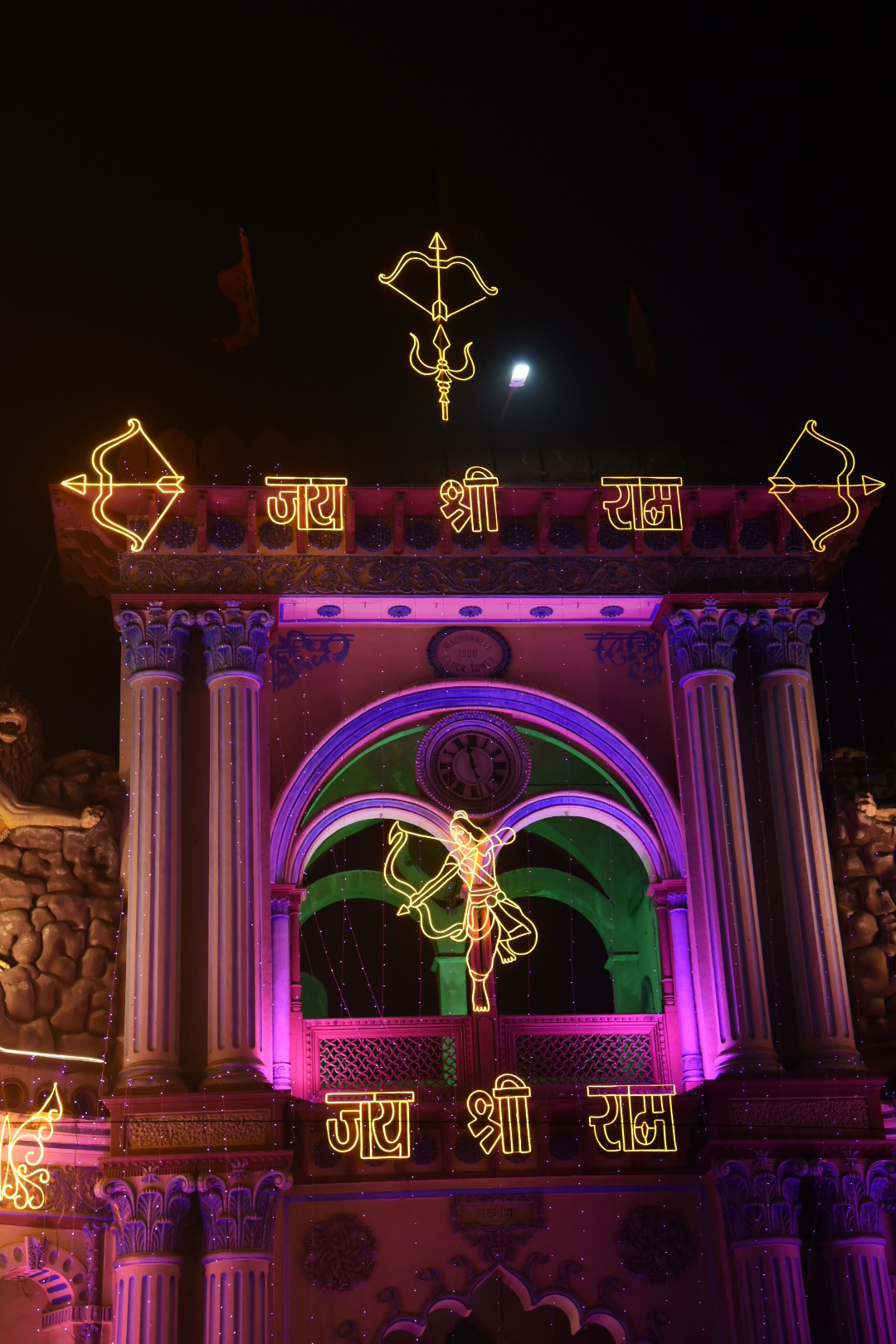
The Ram Mandir is not just a monument in Ayodhya; it’s a living testament to the unifying power of faith. Every stone, every carving, every bell, every fabric tells a story of ‘Ek Bharat Shreshtha Bharat’ that transcends geographical boundaries and unites hearts in a collective spiritual journey.
Meanwhile, Shri Ram Mandir construction has been technically assisted by at least four leading National Institutes of CSIR (Council of Scientific & Industrial Research) and DST (Department of Science & Technology) under Ministry of Science & Technology, in addition to certain inputs from other institutions like IITs as well as ISRO (Indian Space Research Organisation).
Disclosing this here today, Union Minister of State (Independent Charge) Science & Technology; MoS PMO, Personnel, Public Grievances, Pensions, Atomic Energy and Space, Dr Jitendra Singh said, the four institutes which made a significant contribution include CSIR -Central Building Research Institute (CBRI) Roorkee; CSIR – National Geophysical Research Institute (NGRI) Hyderabad; DST – Indian Institute of Astrophysics (IIA) Bengaluru and CSIR-Institute of Himalayan Bioresource Technology (IHBT) Palampur (HP).
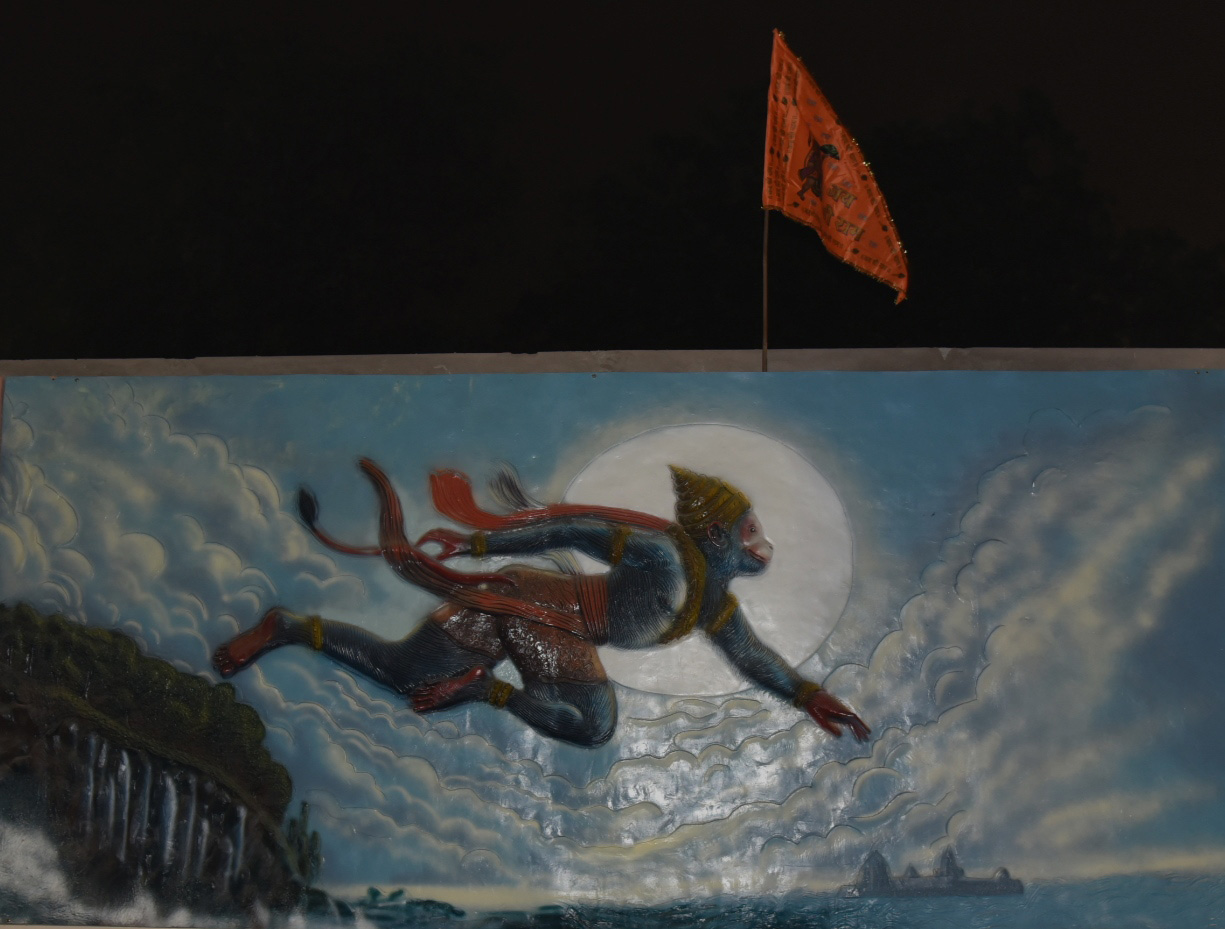
CSIR-CBRI Roorkee has majorly contributed towards Ram Temple construction; CSIR-NGRI Hyderabad gave significant inputs on foundation design and seismic safety; DST-IIA Bengaluru provided technical support on Sun’s path for Surya Tilak and CSIR-IHBT Palampur has made tulips bloom for the divine Ram Mandir Pran Pratishtha ceremony in Ayodhya on 22nd January.
Dr Jitendra Singh said, the main temple building, which is 360 ft long, 235 ft wide and 161 ft high, is made of sandstone quarried from Bansi Pahadpur, Rajasthan. Cement or iron and steel is not used anywhere in its construction. The Structural Design of the 3-storey temple is designed to be earthquake resilient and can withstand strong tremors of magnitude 8 on the Richter scale for as long as 2,500 years.
“CSIR-CBRI Roorkee has been involved in the construction of Ram Mandir since early stages. The Institute has contributed towards Structural Design of the main temple, designing Surya Tilak mechanism, designing vetting of temple foundation, and Structural Health Monitoring of main temple.” Besides CBRI, the CSIR-NGRI Hyderabad also gave significant inputs on foundation design and seismic/ earthquake safety. Few IITs were also part of expert advisory committee and even Space technologies from ISRO have been used in the construction of the grandiose structure.
A unique feature of the Ram Temple is the Surya Tilak mechanism, designed in such a way that the Sun rays will fall on the forehead of Lord Ram’s Idol at 12 noon on Sriram Navami day every year for about 6 minutes. Ram Navami, celebrated on the ninth day of the first month of the Hindu calendar, which is usually in March-April, marks the birthday of Lord Rama, the seventh incarnation of Lord Vishnu. The Indian Institute of Astrophysics Bengaluru provided technical support on Sun’s path and Optica, Bangalore is involved in manufacturing of the lenses and brass tubes.
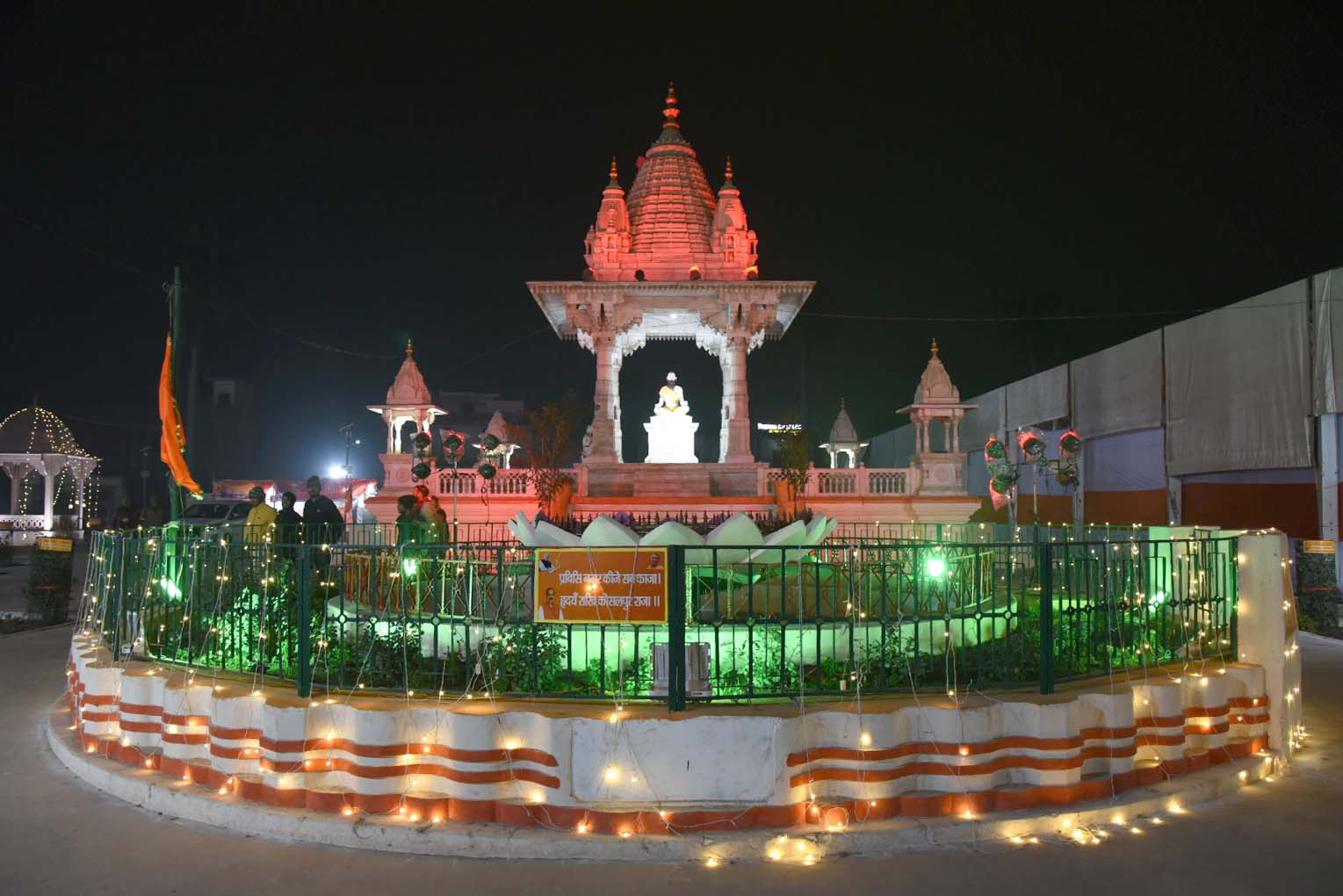
“Gear boxes and reflective mirrors/lenses have been arranged such that sun rays from the Third floor near Shikara will be brought to Garbha Griha using well known principles of tracking Sun’s path.”
CSIR will also be involved in the consecration ceremony. In celebration of faith, unity and the spirit of devotion, CSIR-IHBT Palampur (HP) is sending Tulip Blooms to the divine Ram Mandir Pran Pratishtha ceremony in Ayodhya on 22nd January. “Tulip do not flower in this season. It grows only in Jammu & Kashmir and few other higher Himalayan regions and that too only in the spring season. The Institute of Himalayan Bioresource Technology Palampur has recently developed an indigenous technology through which tulips could be made available throughout the year, without waiting for its season.
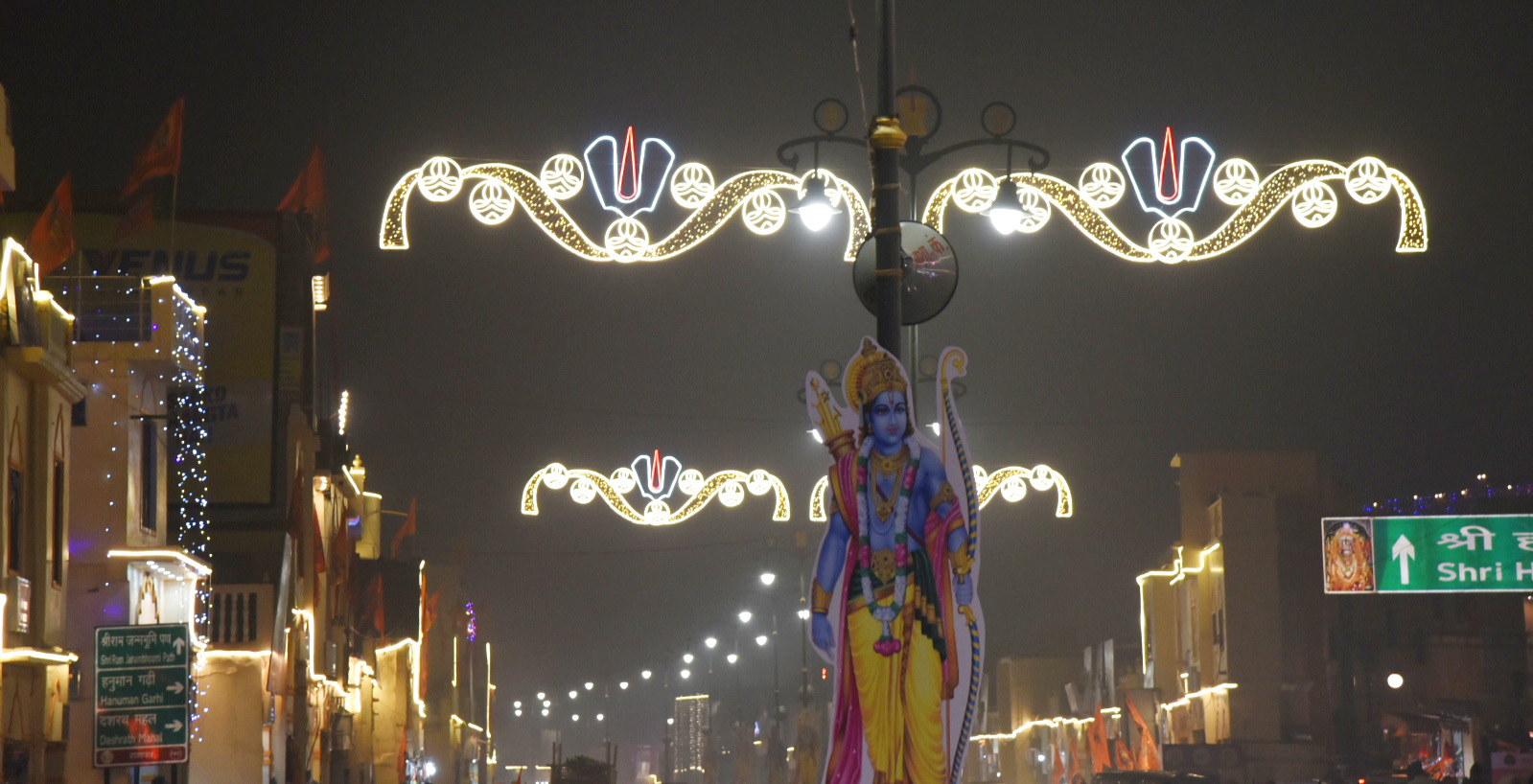
Similarly, the Minister informed that the National Botanical Research Institute (NBRI) Lucknow has developed a new lotus variety named ‘NBRI Namoh 108’. The Namoh 108 lotus variety flowers from March to December and is rich in nutrients. This is the first lotus variety whose genome is completely sequenced for its characteristics. PM Modi has in the last ten years stressed on the fusion of traditional and modern knowledge through an extended integration of all schools of thought.


